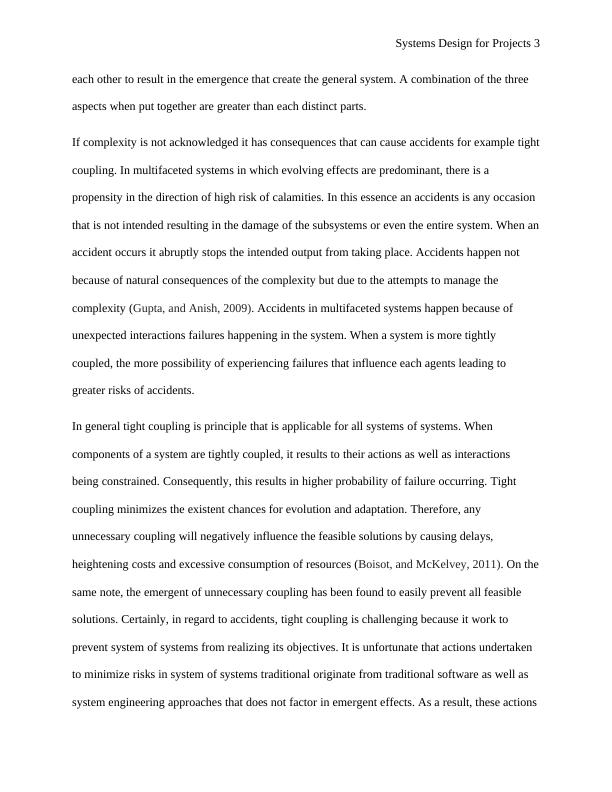Systems Design for Projects
The lecture notes provide an introduction to the Systems Fundamentals course, focusing on complex systems and their independence. The course prepares students for further study in Complex Project Management, Portfolios and Programs Management, and Enterprise Transformation.
8 Pages1913 Words353 Views
Added on 2022-11-23
About This Document
This paper discusses the reasons for studying complexity, and the consequences of not recognizing complexity. It also provides comments on the use of systems techniques to addressing problems such as acquiring a large tract of land for a new facility and approach on how to deal with student plagiarism.
Systems Design for Projects
The lecture notes provide an introduction to the Systems Fundamentals course, focusing on complex systems and their independence. The course prepares students for further study in Complex Project Management, Portfolios and Programs Management, and Enterprise Transformation.
Added on 2022-11-23
ShareRelated Documents
End of preview
Want to access all the pages? Upload your documents or become a member.
Aviation Management: Human Factors and Accidents
|8
|1224
|37
Formalization of Weak Emergence in Multiagent Systems
|15
|3631
|433
Diversity in HardEdge Solutions | Case Study
|14
|3931
|38
Supply Chain Modeling and Simulation Module
|13
|2653
|243



